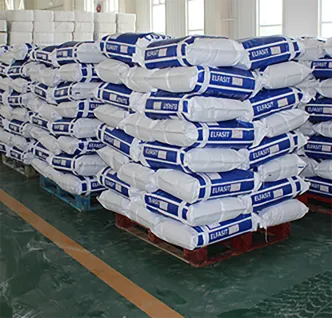
Dec . 17, 2024 13:34 Back to list
Properties and Applications of Redispersible Polymer Powder in Construction and Coatings
Understanding Redispersible Polymer Powder Applications and Benefits
Introduction
Redispersible polymer powder (RDP) has gained significant traction in the construction and building materials industries due to its diverse applications and unique properties. This article seeks to explore what RDP is, its benefits, its applications, and its role in modern construction.
What is Redispersible Polymer Powder?
Redispersible polymer powder is a fine, free-flowing powder that consists of polymer emulsions that have been dried through a spray-drying process. These polymers can easily be re-dispersed in water, creating a stable and homogenous mixture. Typically, RDPs are based on vinyl acetate, ethylene, or other synthetic polymers.
Benefits of Redispersible Polymer Powder
1. Improved Adhesion and Cohesion One of the primary benefits of RDP is its ability to enhance the adhesion of cement-based materials. When mixed with mortar or concrete, RDP improves the binding properties, leading to better performance and durability of the finished product.
2. Water Resistance RDP provides excellent water resistance, which makes it an essential component in applications like tile adhesives and external facade systems. This resistance helps protect structures from damage due to moisture ingress.
3. Flexibility and Crack Resistance By incorporating RDP, the elasticity of the mixture is enhanced. This flexibility is vital for applications subjected to thermal and mechanical stresses, reducing the likelihood of cracking.
4. Workability The addition of RDP improves the workability of the materials. This benefit allows for easier application, better leveling, and enhanced performance during installation.
5. Reduced Shrinkage RDP minimizes shrinkage in mortar and concrete mixtures. This property helps in maintaining the integrity of structures, reducing the potential for damage over time.
re dispersible polymer powder

Applications of Redispersible Polymer Powder
1. Tile Adhesives RDP is commonly used in tile adhesives, providing superior bonding strength and flexibility. This ensures that tiles remain securely in place even under varying conditions.
2. Leveling Compounds In floor leveling compounds, RDP contributes to the smooth application and enhanced adhesion of the mixture to various substrates, ensuring a level surface.
3. Textured Coatings The use of RDP in textured coatings allows for a more flexible application that resists cracking and provides a more durable finish.
4. Mortar and Plaster RDP is increasingly integrated into ready-mix mortars and plasters, enhancing their performance properties, including workability, adhesion, and durability.
5. Repair Products For repair mortars and concrete overlays, RDP offers improved bonding and flexibility, essential for ensuring long-lasting repairs.
Environmental Considerations
RDP is often produced with sustainable practices in mind, using raw materials that aim to reduce environmental impact. Additionally, the incorporation of RDP can lead to reduced material waste during construction due to better adhesion and performance characteristics, contributing to more sustainable building practices.
Conclusion
Redispersible polymer powders are invaluable in the construction sector, offering improved performance and durability across a range of applications. Their unique properties, such as enhanced adhesion, flexibility, and water resistance, make them indispensable in modern construction materials. As the industry continues to evolve, RDP will play a crucial role in meeting the increasing demand for efficient, sustainable building solutions. The integration of RDP not only enhances the quality of construction materials but also ensures their longevity, ultimately leading to more resilient structures. With the ongoing advancements in polymer technology, the potential applications of RDP are expected to expand, further solidifying its position in the building materials market.
-
Versatile Hpmc Uses in Different Industries
NewsJun.19,2025
-
Redispersible Powder's Role in Enhancing Durability of Construction Products
NewsJun.19,2025
-
Hydroxyethyl Cellulose Applications Driving Green Industrial Processes
NewsJun.19,2025
-
Exploring Different Redispersible Polymer Powder
NewsJun.19,2025
-
Choosing the Right Mortar Bonding Agent
NewsJun.19,2025
-
Applications and Significance of China Hpmc in Modern Industries
NewsJun.19,2025







